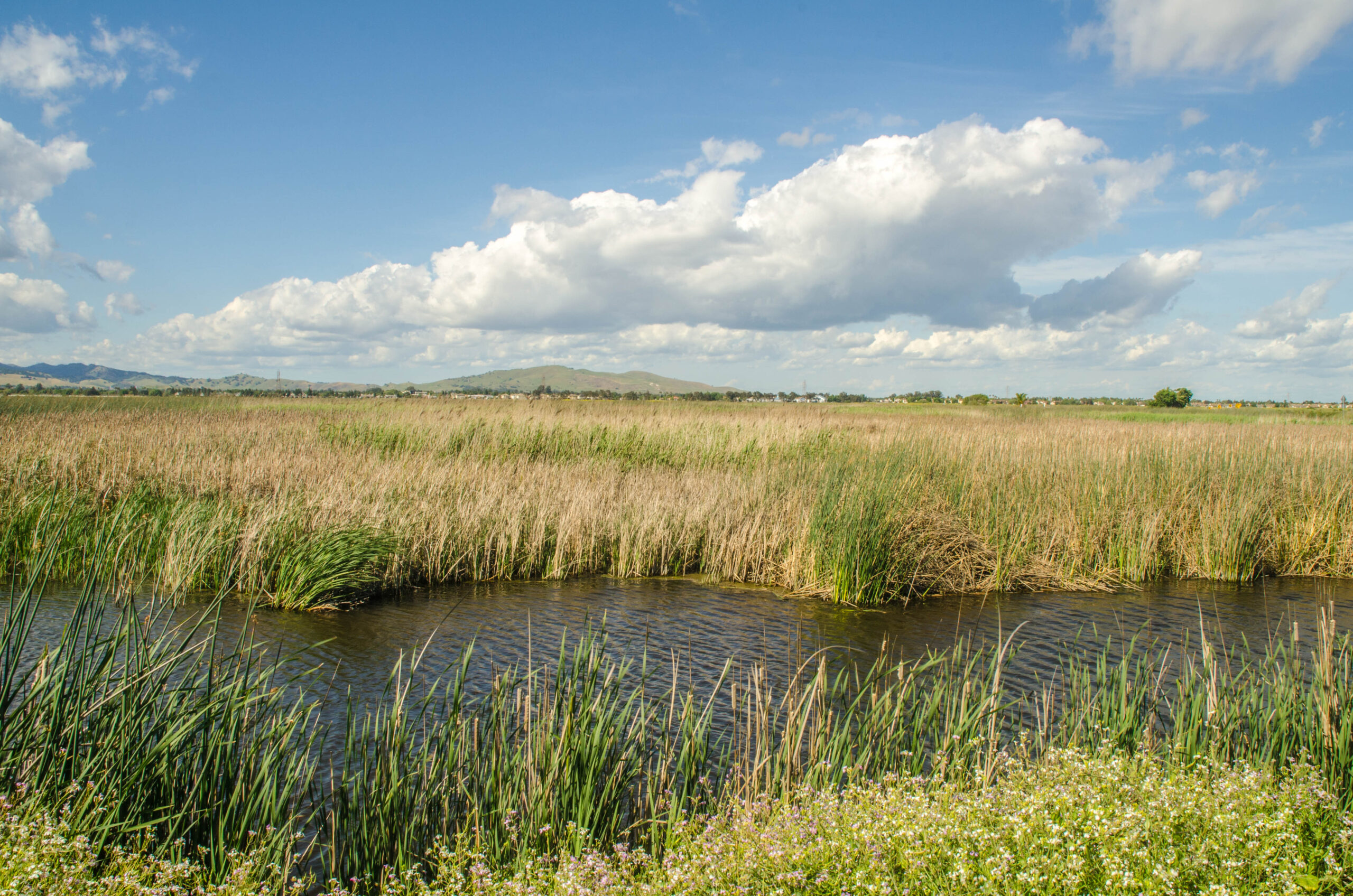Written by Robin Meadows
San Francisco Estuary Institute ecologist Letitia Grenier has already led projects on working with nature toward large-scale restoration in both the San Francisco Bay and the Sacramento-San Joaquin Delta. Now, with a 2021 Delta Stewardship Council grant, she’s extending these efforts to the Suisun Marsh, a 115,000-acre brackish wetland that lies between the Bay and the Delta.

These three regions have ecological and social differences, not to mention distinct political boundaries — but they also have a lot in common. “It’s all one big, beautiful estuary,” Grenier says.
Trained as a conservation biologist at UC Berkeley, Grenier began her career specializing in tidal marshes. This expertise came in handy when she was tapped as science lead on the 2015 update to the Baylands Ecosystem Habitat Goals, a California Coastal Conservancy project focused on making the San Francisco Bay’s tidal wetlands more resilient to rising seas.
The Baylands update, which took three years, taught Grenier how to coordinate a multitude of stakeholders, including 26 organizations on the steering committee and about 200 participants total. “Rather than being the one who knew stuff, I was the one who listened,” she says. “I was like the hub that pulled together information from all those people and put it into one voice.”
The Baylands update has been embraced by the regional restoration community. Key recommendations include recasting sediment from a nuisance waste product to a precious resource that feeds marshes, and tailoring climate adaptation to the Bay’s diverse shoreline types, ranging from steep, rocky headlands to low-lying valleys around river mouths.
Grenier has also applied her knowledge of marshes to the Delta, leading an SFEI team that developed a planning tool that lets decision-makers evaluate a variety of restoration scenarios. The first step, led by Allison Whipple, was documenting the historical ecology of this landscape. The original Delta was 500,000 acres of freshwater marsh, most of it tidal marsh. Today nearly all that marsh has been converted to farmland. “To restore, you need to understand the past,” Grenier says. “How did the landscape work before it was altered?” Given the scale of transformation, the project’s goal is to restore the Delta’s natural processes rather than to recreate what once was.
In 2020, SFEI released the first version of the Delta Landscapes Scenario Planning Tool, which helps users assess ecological and economic tradeoffs of restoration projects, and track progress towards restoration goals. Metrics include support for fish populations, marsh and riparian habitat, land subsidence, and agriculture. “It lets you think about multiple impacts and benefits at once,” Grenier says, adding that the science behind the tool has already informed critical planning documents for the Delta.
The next version of the Delta scenario planning tool will also include the carbon flux as land subsides further or is rebuilt. Ultimately, Grenier wants to incorporate local community perspectives such as subsistence fishing, urban interests, Native American tribes, and farmworkers in addition to the farmers and recreational fishers who already add their voices to the conversation. “A tool is powerful if everybody is represented,” she says. “Even if you can’t show up at the table, your metric is there.”

Merging her interests in the Bay and Delta, Grenier was the science lead for the 2015 and 2019 San Francisco Estuary Partnership’s State of the Estuary Reports, which track trends in ecosystem health from freshwater flows to tidal marsh acreage to urban water use. “These last two reports have truly begun to combine the Bay and Delta,” she says.
Now Grenier is expanding her vision to the Suisun Marsh, the brackish wetland that connects the salty Bay with the freshwater Delta. “Suisun Marsh is transitional so it’s special,” she says. “It’s a cool ecosystem, conditions are always changing along a gradient from fresh to salt, so biodiversity is high.” Once a vast expanse of tidal marsh, today much of this wetland is diked and managed as duck clubs. These privately-owned parcels are vulnerable to levee failure, with no public funding available for maintenance and repairs.
Grenier currently leads an SFEI team to extend the scenario planning tool to the Suisun Marsh. Drawing on their experience with the Delta project, the team will start by documenting the historical ecology of the marsh. The team is also assembling a group of stakeholders to participate in and help shape the project. Grenier has the advantage of being able to build on longstanding relationships fostered over her years of working on the Estuary. For example, Steve Chappelle, who directs the Suisun Resource Conservation District, was on the steering committee for the Baylands update. For her current project, Chappelle will be a vital link with the duck club owners. Now that many meetings are virtual due to the ongoing pandemic, personal connections are more important than ever.
Besides her goal of unifying restoration throughout the San Francisco Estuary, Grenier’s work has the common thread of working with nature rather than trying to tame it. “We’re thinking about how to work with nature to restore benefits for wildlife and people — we all need the same ecosystem services,” she says. “We need to align ourselves with the natural world.”
Produced by Estuary News Group



